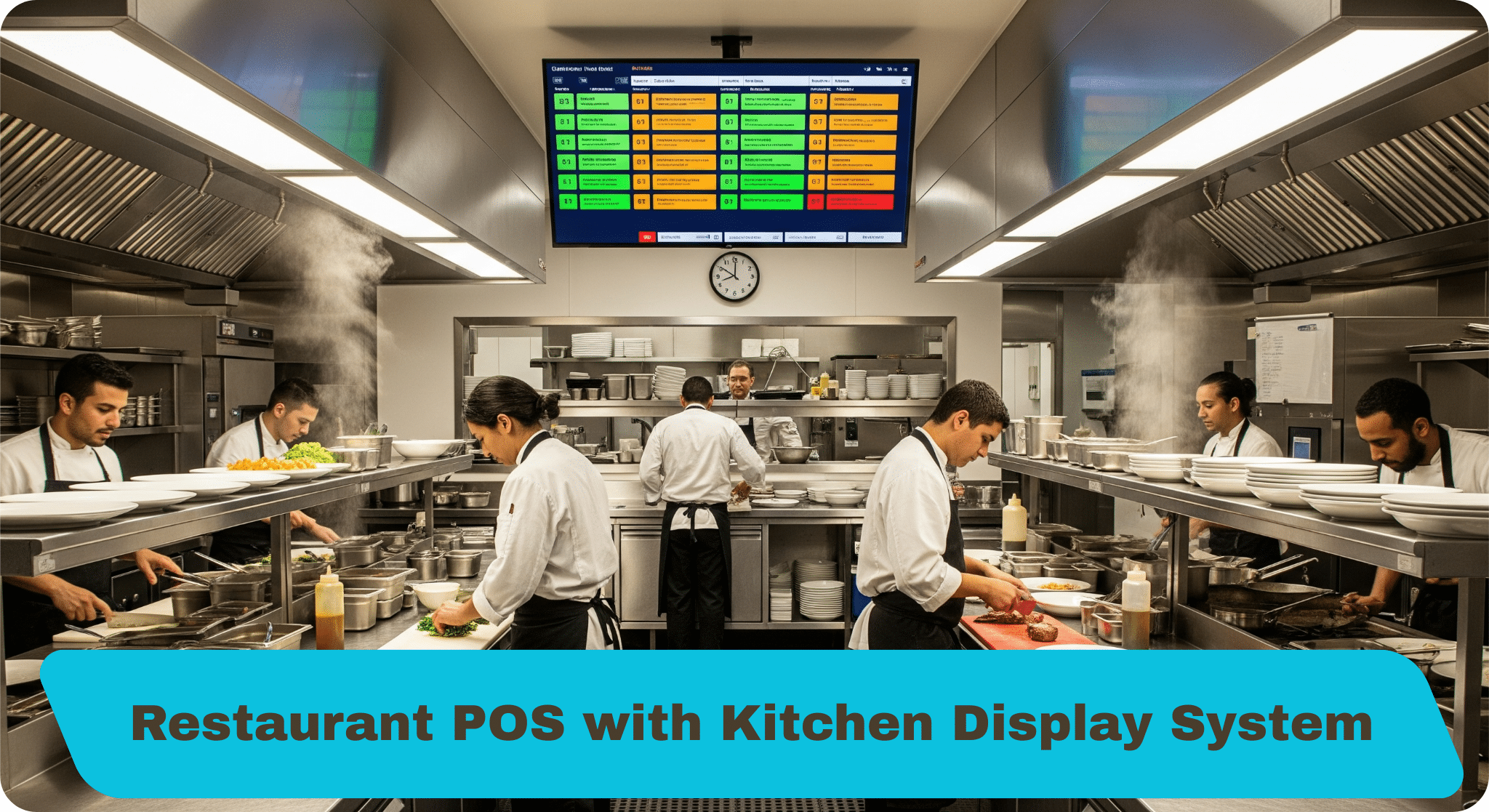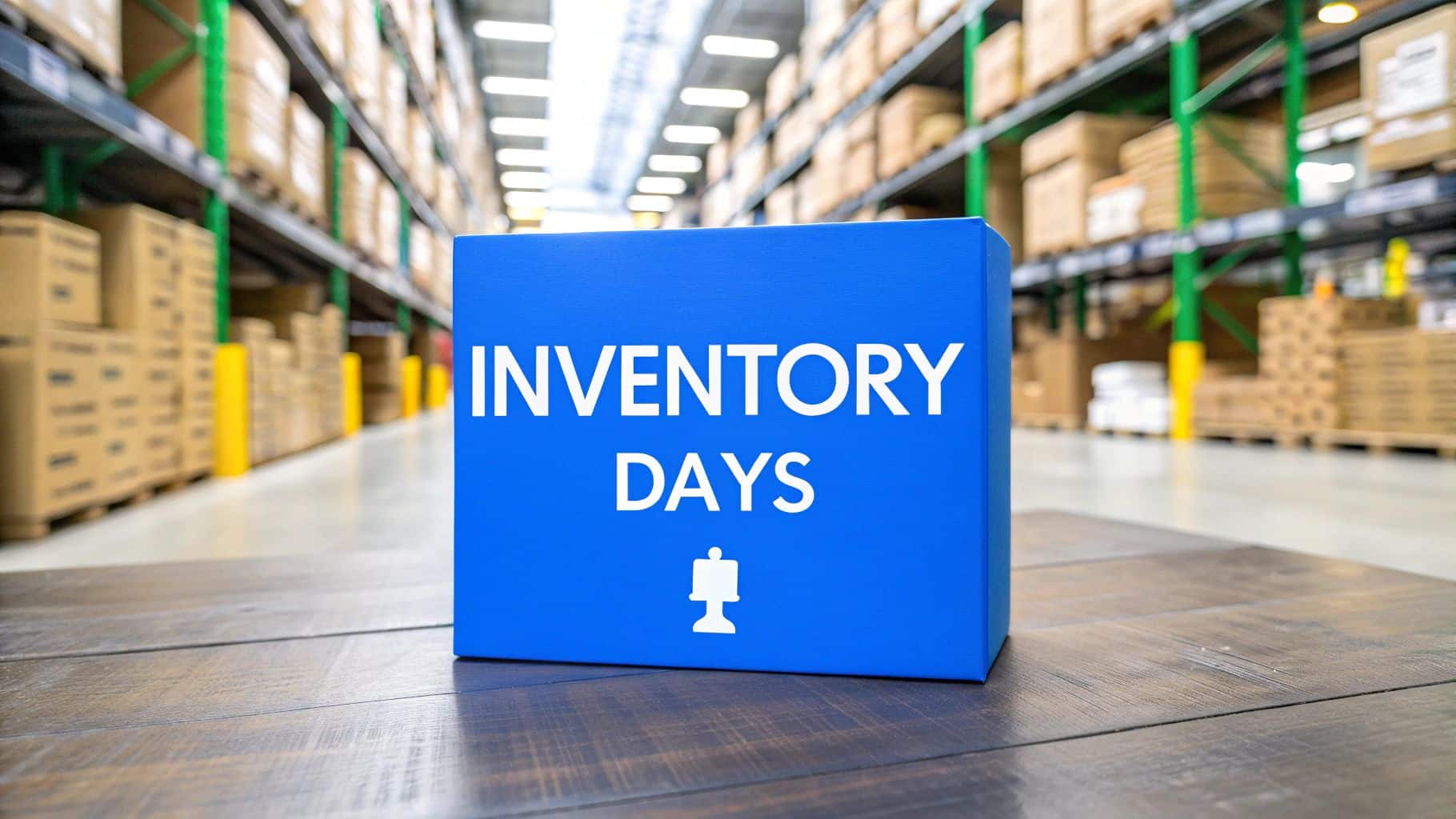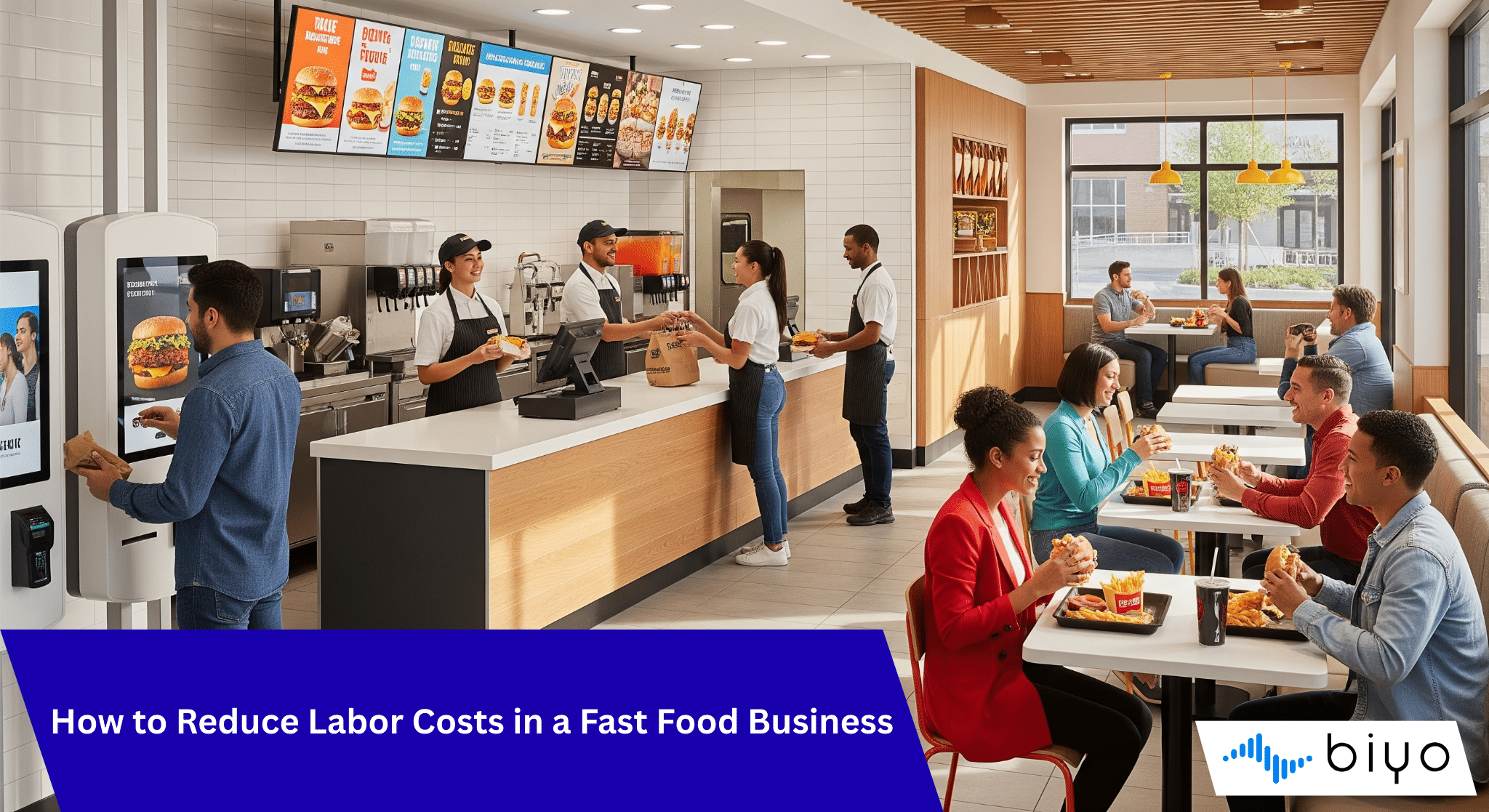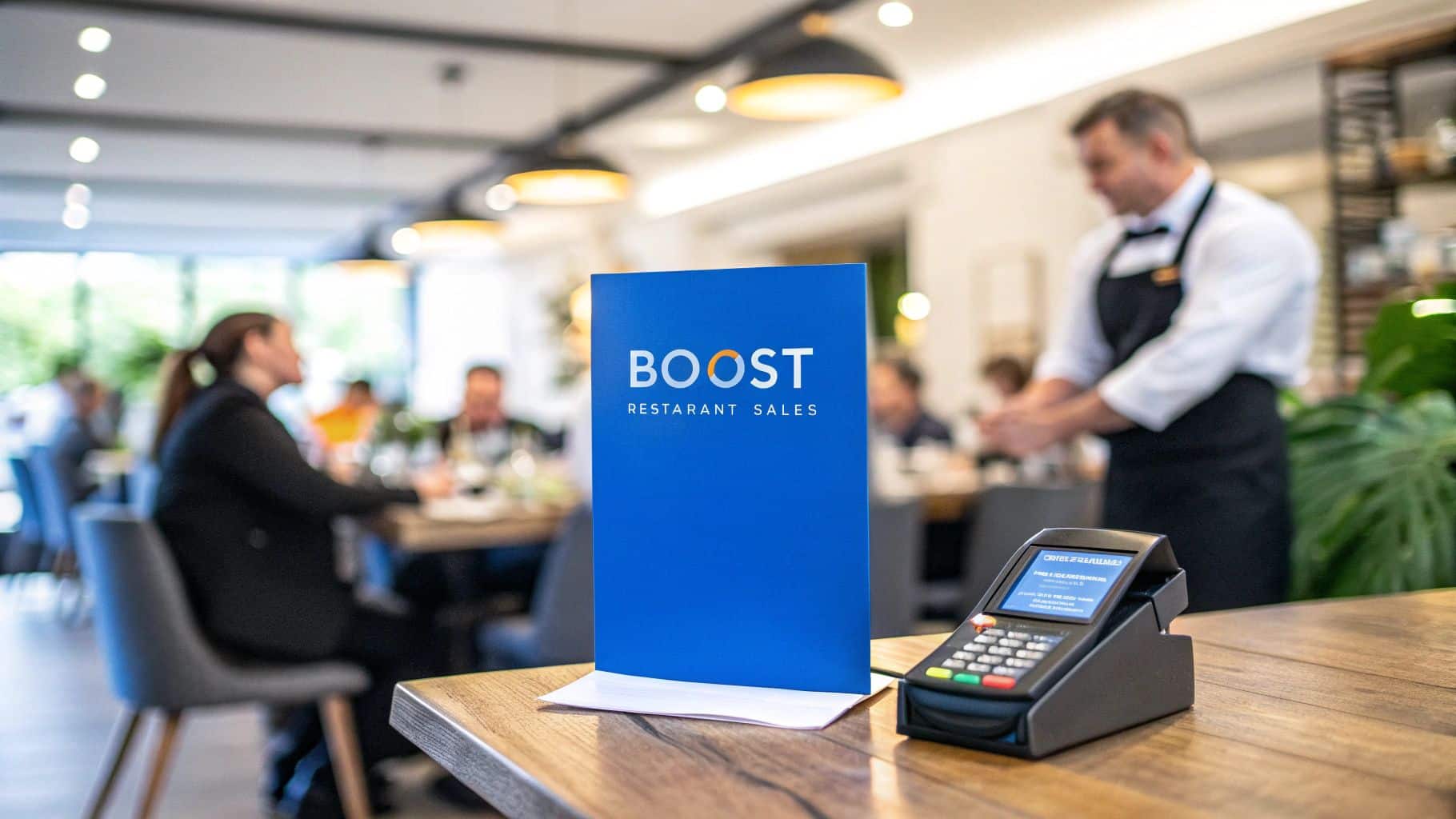Managing multiple restaurants is both rewarding and challenging. Each branch has its own unique environment, but consistency in operations, customer service, and brand identity is non-negotiable. A multi-location restaurant POS with table-management features ensures smooth operations across every location. It goes beyond payment processing, enabling centralized management, synchronized menus, real-time analytics, and optimized seating layouts that keep service efficient. In this guide, we’ll explore why this technology is transforming the way franchises and multi-branch restaurants operate, and how it can help you create a stronger, more profitable business.
Table of Contents
- Key Benefits of a Multi-Location Restaurant POS
- Table-Management Features for Seamless Dining
- Optimizing Multi-Location Restaurant Operations
- The Power of Real-Time Analytics and Reporting
- The Future of Multi-Location POS Technology
- Why Biyo POS is the Right Choice
- Frequently Asked Questions
Key Benefits of a Multi-Location Restaurant POS
Operating several restaurant branches introduces challenges that single-location businesses rarely face. From coordinating menus to monitoring sales across sites, owners need tools that centralize and simplify operations. A multi-location restaurant POS with table-management features delivers exactly that. Below, we’ll explore the biggest benefits, from centralized control to enhanced customer experience and streamlined staffing.
Centralized Management Across Multiple Locations
A multi-location restaurant POS with table-management features allows restaurant groups to control all operations through a single system. Without centralization, owners often juggle separate systems at each location, creating inconsistent data and customer experiences. A centralized POS eliminates that friction by giving leaders one dashboard to oversee sales, menus, reservations, and staffing across every branch. For instance, a franchise owner can update a seasonal menu once, and it appears simultaneously across all locations—avoiding confusion and delays.
Centralization also improves decision-making by providing instant visibility into business performance. Owners can compare locations side by side, spotting which branches are thriving and which need extra support. If sales dip at one site, managers can investigate immediately instead of waiting for end-of-month reports. This kind of oversight isn’t just convenient—it’s essential for scaling restaurant operations profitably.
Finally, a centralized system ensures consistency. Customers trust that their favorite dish will taste the same whether they order downtown or in the suburbs. Staff benefit too, since training becomes easier when workflows and menus are standardized. This balance of efficiency and quality makes centralized POS management a game-changer for multi-location restaurants.
Improved Customer Experience
Customers don’t care how complex your operations are—they care about fast, friendly, and accurate service. A multi-location restaurant POS with table-management features ensures you deliver just that. With integrated reservation systems, guests can book tables online and be seated smoothly upon arrival. Digital floor plans help hosts assign tables without confusion, cutting down on wait times and enhancing first impressions. In busy environments, these small improvements make a big difference in customer satisfaction.
Payment flexibility is another critical part of the experience. Modern POS systems support mobile payments, contactless cards, and even QR code-based ordering. These options reduce delays at checkout and give customers more control over how they pay. In fast-paced dining environments, shaving a few minutes off payment processing can significantly increase turnover and revenue.
Multi-location consistency also strengthens brand loyalty. If a customer has a great experience at one branch, they expect the same level of service at another. A unified POS ensures the customer journey is smooth and reliable at every location, whether it’s dine-in, takeout, or delivery. This builds trust and keeps customers coming back.
Streamlined Staff and Resource Management
Behind every great dining experience is a well-organized staff. A multi-location restaurant POS with table-management features simplifies scheduling and task assignments across branches. Managers can build schedules directly within the POS, accounting for peak hours and historical traffic data. For example, if Friday nights are consistently busy, the system will recommend more servers and kitchen staff for that shift. This ensures restaurants remain properly staffed without wasting resources on unnecessary labor costs.
The system also promotes transparency for staff. Employees can check schedules, request shift changes, and receive notifications through connected apps. This reduces miscommunication and last-minute no-shows. Multi-location visibility means managers can also reallocate staff between branches when one site is busier than expected, preventing service bottlenecks.
Finally, consistent workflows across branches reduce training time. With synchronized menus and standardized procedures, staff can move between locations with ease. This flexibility is especially valuable for franchises that experience seasonal spikes in demand. It ensures smoother operations, happier employees, and more satisfied customers.
Table-Management Features for Seamless Dining
Table management is the foundation of an efficient dine-in operation. For multi-location restaurants, managing seating and reservations consistently across all branches is critical. A multi-location restaurant POS with table-management features makes it possible to optimize layouts, integrate reservations, and balance order flow with precision. Let’s explore these capabilities in more detail.
Dynamic Table Layout Management
Dynamic table layout tools allow managers to design digital floor plans that reflect real-time dining room activity. Instead of relying on paper charts or verbal updates, staff can see instantly which tables are available, occupied, or being cleaned. This eliminates confusion and speeds up the seating process. For example, if a party of six arrives unexpectedly, staff can quickly rearrange tables digitally to accommodate them without disrupting the flow of other guests.
Restaurants that use dynamic layouts also see better utilization of space. Every seat counts, especially during peak hours. By balancing large and small groups effectively, restaurants increase turnover without sacrificing comfort. Case studies show that table turnover improvements of even 10% can boost revenue significantly, all thanks to smarter layouts.
Multi-location restaurants benefit from the consistency these tools bring. While each branch may have unique layouts, the approach to managing them remains the same. This ensures customers always receive efficient service, regardless of which location they visit.
Reservation System Integration
Reservation integration is another vital feature of modern POS systems. Instead of tracking bookings separately, reservations sync directly into the POS and appear on the seating chart. This prevents double-booking, reduces errors, and makes the host’s job far easier. Guests booking through apps or websites see real-time availability, which increases confidence in the restaurant’s reliability.
For restaurants, the data generated from reservations is just as valuable as the operational efficiency. POS systems can track booking patterns, preferred time slots, and customer preferences. For example, regulars who consistently book a corner table can have their preferences flagged automatically. Personalized touches like this foster loyalty and create a competitive advantage.
Multi-branch consistency matters here too. Customers want to know they can trust the brand’s reservation system regardless of location. When reservation processes are unified across branches, it builds credibility and customer trust.
Seating Optimization and Order Flow
Seating optimization goes beyond simply filling tables—it balances workloads and maximizes order flow. A multi-location restaurant POS with table-management features distributes guests evenly among servers, preventing overload. This not only improves staff morale but also ensures customers are served quickly and accurately. Balanced workloads translate into faster service and fewer mistakes, both of which are crucial for customer satisfaction.
Order flow also improves when seating is optimized. A balanced distribution of orders prevents sudden surges in the kitchen, which can overwhelm staff and delay service. Instead, the kitchen receives a steady stream of orders, allowing them to maintain consistency and quality. This harmony between front-of-house and back-of-house operations leads to smoother service and happier guests.
In terms of profitability, seating optimization has a direct impact. By turning tables faster without rushing customers, restaurants serve more diners per shift. Even small increases in turnover add up quickly, especially across multiple locations. This makes seating optimization one of the most effective ways to boost revenue without major investments.
Optimizing Multi-Location Restaurant Operations
Operational efficiency is the backbone of a successful restaurant chain. Without streamlined processes, businesses risk wasted resources and frustrated customers. A multi-location restaurant POS with table-management features ensures smoother operations across branches. From cross-location reporting to synchronized menus and staff scheduling, these tools keep everything aligned.
Cross-Location Reporting and Sales Tracking
Sales tracking across branches provides the insights restaurant owners need to manage growth. With a multi-location restaurant POS with table-management features, all data flows into a centralized dashboard. This eliminates delays caused by manual reporting. For example, if one branch’s sales suddenly dip, managers can investigate immediately, rather than discovering the issue weeks later. Fast responses protect revenue and ensure consistent performance across locations.
The reporting isn’t just about revenue. A robust POS provides breakdowns by menu item, time of day, or customer type. If data reveals that weekday lunch sales are underperforming, owners can introduce targeted promotions or adjust staffing. On the flip side, if certain dishes perform exceptionally well at one branch, the promotion can be replicated across the brand to boost sales everywhere.
Ultimately, cross-location reporting fosters accountability. Branches can be compared directly, encouraging managers to maintain high standards. This healthy competition improves results while ensuring brand-wide consistency.
Menu Synchronization Across Branches
Menu synchronization ensures consistency across all branches, which is critical for building a strong brand identity. A multi-location restaurant POS with table-management features allows central updates that apply instantly to every location. Customers benefit by knowing that their favorite dishes are available at any branch. Staff benefit by avoiding confusion caused by inconsistent menus.
Beyond consistency, synchronized menus support large-scale promotions. Seasonal offerings, limited-time specials, and nationwide campaigns can be launched across the brand simultaneously. This unified approach creates marketing momentum while reducing operational complexity. A pumpkin spice latte promotion, for example, can roll out seamlessly across every café in the chain without requiring manual updates at each location.
Training costs also drop significantly with synchronized menus. Employees learn one menu and workflow, even if they transfer between locations. This reduces onboarding time and strengthens overall service consistency, which customers immediately notice.
Staff Scheduling and Resource Allocation
Labor costs are one of the largest expenses for restaurants. A multi-location restaurant POS with table-management features optimizes staffing by forecasting needs based on historical sales and upcoming reservations. Managers can schedule more accurately, reducing overstaffing during slow periods and avoiding service failures during busy ones. For example, if Saturday brunch consistently brings heavy traffic, the system ensures extra staff are scheduled accordingly.
Staff scheduling tools also improve communication. Employees can swap shifts or request changes through the system, minimizing confusion and last-minute absences. This digital transparency fosters trust and improves morale, as staff feel more in control of their schedules. Happier employees usually provide better service, which strengthens customer satisfaction.
For multi-location operators, the ability to reallocate staff across branches is invaluable. If one location experiences a surge due to a local event, managers can quickly transfer staff from a quieter branch. This flexibility ensures consistent service and keeps labor costs under control.
The Power of Real-Time Analytics and Reporting
Analytics are the difference between reactive and proactive management. A multi-location restaurant POS with table-management features delivers real-time insights that empower smarter decisions. From sales trends to customer data, the system ensures operators have the information they need to optimize performance.
Real-Time Sales and Performance Monitoring
Real-time monitoring lets managers respond immediately to changing conditions. If a dinner rush is stronger than expected, staff can be reassigned instantly. If sales are unusually slow, promotions can be launched mid-shift to attract more customers. This agility helps restaurants maximize opportunities and minimize losses.
Over the long term, performance monitoring reveals patterns. One branch may perform better with online orders, while another thrives on dine-in traffic. These insights allow tailored strategies for each location while maintaining overall brand cohesion. For example, a city-center branch could invest more in delivery partnerships, while suburban branches emphasize family dining promotions.
Executives benefit too. Having up-to-the-minute performance data across multiple locations enables smarter growth decisions. Whether deciding where to open a new branch or how to price a popular dish, leaders can act with confidence backed by data.
Customer Database and Loyalty Programs
A POS system that includes customer database management turns every transaction into a relationship-building opportunity. A multi-location restaurant POS with table-management features collects dining history, preferences, and loyalty points across branches. Restaurants can then personalize experiences by offering rewards tailored to each customer’s habits. For example, frequent weekday visitors might get lunch discounts, while weekend families could receive loyalty offers on family platters.
Loyalty programs work best when they’re consistent across locations. Customers want to know they can earn and redeem points anywhere in the chain. This consistency increases brand stickiness and encourages guests to choose your restaurant over competitors. National chains like Starbucks have proven how powerful unified loyalty programs can be, and now smaller franchises can replicate those results with modern POS technology.
Analyzing customer data also guides marketing campaigns. Regional preferences, for instance, can inform targeted ads and promotions. This creates stronger engagement and increases the likelihood of repeat visits, boosting both revenue and brand loyalty.
Integration with Online Ordering and Kitchen Display Systems
Today’s customers expect flexible ordering, and a multi-location restaurant POS with table-management features provides exactly that. Online orders flow directly into the same system as dine-in tickets, eliminating duplication and errors. This makes it easier for staff to manage multiple order streams simultaneously, improving efficiency and accuracy.
Kitchen display systems (KDS) are equally transformative. Orders appear instantly on digital screens, allowing staff to track progress, prioritize tasks, and reduce mistakes. This eliminates the need for handwritten tickets, which are prone to errors. Restaurants with KDS often see faster preparation times and fewer order mix-ups, which boosts customer satisfaction.
Integration also improves reporting. Managers can track what percentage of sales come from online versus dine-in channels and adjust strategies accordingly. For example, branches with high online order volumes might expand delivery services, while dine-in heavy branches focus on table management. This adaptability keeps operations efficient and customer-centered.
The Future of Multi-Location POS Technology
Restaurant technology continues to evolve rapidly, and the future of multi-location restaurant POS with table-management features promises even more powerful tools. From mobile devices to artificial intelligence, the next generation of POS solutions will further streamline operations and improve customer experiences.
Mobile POS and Contactless Payments
Mobile POS systems allow servers to take orders and process payments right at the table. This speeds up service, reduces errors, and increases table turnover. Guests no longer wait for their bill or worry about split payments. Instead, they can pay instantly with a card, phone, or digital wallet. In fast-casual and full-service restaurants alike, mobile POS creates smoother interactions and higher customer satisfaction.
Contactless payments have also become an expectation, not just a convenience. Customers prefer quick, secure transactions with minimal physical contact. For multi-location restaurants, providing consistent payment options across branches builds trust and reliability. Guests know they can enjoy the same fast checkout at any location.
Ultimately, mobile and contactless payment solutions benefit both customers and staff. Servers handle more tables with less effort, and customers enjoy a modern, convenient experience. This technology will only become more critical as digital-first dining continues to grow.
AI and Smart Analytics for Smarter Operations
Artificial intelligence is revolutionizing how restaurants analyze and respond to data. A multi-location restaurant POS with table-management features powered by AI can forecast demand based on weather, local events, and historical trends. For example, the system might predict a spike in orders during a local festival and recommend increasing staff and inventory ahead of time. This level of predictive intelligence reduces waste and increases profitability.
AI also personalizes customer engagement. By analyzing purchase history and preferences, it can suggest promotions or loyalty rewards tailored to each guest. A weekday regular might receive a targeted lunch offer, while a family diner gets a promotion for weekend meals. This precision marketing boosts engagement without wasting resources on irrelevant offers.
For operators, AI enhances training and operational efficiency. By tracking service speed, order accuracy, and staff performance, it identifies areas where employees need extra support. Over time, this creates a better-trained workforce and a stronger brand reputation across all branches.
Cloud-Based Innovations and Scalability
Cloud-based POS systems provide unmatched scalability. New locations can be added with minimal setup, allowing franchises to expand without massive IT investments. Data is synchronized across all branches in real time, ensuring accuracy and consistency. For owners overseeing multiple cities or regions, cloud systems provide peace of mind and accessibility from anywhere in the world.
Cloud technology also opens the door to future integrations. From IoT devices like smart refrigerators to third-party apps for delivery or marketing, cloud POS systems act as hubs for innovation. Restaurants can adapt quickly to changing trends and customer expectations by adding new features without overhauling their systems.
As competition intensifies, scalability becomes a critical advantage. A cloud-based multi-location restaurant POS with table-management features ensures businesses remain agile, competitive, and ready for future growth opportunities.

Why Biyo POS is the Right Choice
If you’re searching for a multi-location restaurant POS with table-management features, Biyo POS delivers everything modern restaurants need. Its centralized dashboard gives operators control over menus, reservations, staff scheduling, and cross-location reporting. From single cafés expanding into franchises to enterprise-level brands with dozens of locations, Biyo POS adapts to your growth seamlessly.
With features like mobile POS, contactless payments, kitchen display system integration, and real-time analytics, Biyo POS equips restaurants with the tools to deliver outstanding customer experiences. Its loyalty programs and customer database strengthen engagement, while its cloud-based design ensures scalability and security. No matter how many locations you manage, Biyo POS keeps your brand consistent and your operations efficient.
Choosing Biyo POS means choosing a future-ready partner. Designed for flexibility and growth, it supports restaurant operators in providing exceptional service today while preparing for the innovations of tomorrow.
Frequently Asked Questions
What is a multi-location restaurant POS with table-management features?
It’s a point-of-sale system designed to unify restaurant operations across multiple branches. It combines centralized reporting, synchronized menus, table layout tools, and staff scheduling to create efficiency and consistency. This ensures smoother operations and a better customer experience across every location.
How does table management improve restaurant operations?
Table management optimizes seating and order flow by balancing workloads across servers and preventing bottlenecks in the kitchen. It reduces wait times, increases table turnover, and creates smoother dining experiences. Over time, this efficiency translates into higher revenue and stronger customer loyalty.
Can I use one POS system for multiple restaurant branches?
Yes. A multi-location restaurant POS with table-management features is designed to centralize operations across all branches. Owners can manage menus, track sales, schedule staff, and analyze performance from one system, ensuring brand consistency and easier scaling.
Does a multi-location POS support online ordering?
Most modern systems integrate online ordering and delivery directly into the POS. This allows dine-in, takeout, and delivery orders to be managed in one place. Integration with kitchen display systems ensures orders are prepared quickly and accurately, while reporting provides valuable insights into customer preferences.
Why should I choose Biyo POS for my restaurant?
Biyo POS combines advanced features like table layout management, staff scheduling, loyalty programs, and real-time reporting with scalability and ease of use. Its cloud-based design and mobile integrations make it ideal for growing franchises and enterprise restaurants. With Biyo POS, operators gain efficiency, consistency, and the ability to delight customers at every location.




